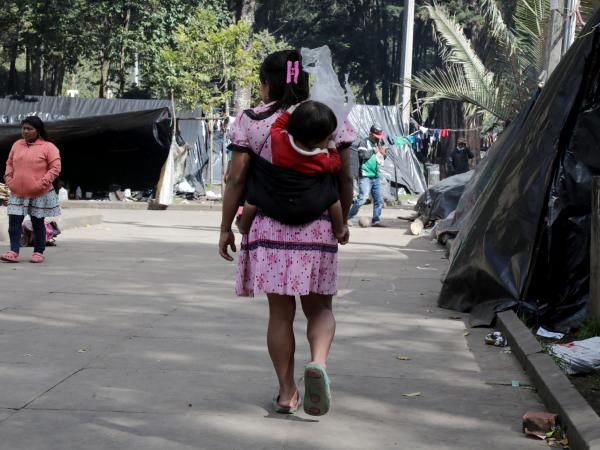Colombia has been a country marked by internal migratory processes to throughout history, as a result of dynamics typical of the economy of the regions, but also of an armed conflict that has led a large part of the population to abandon their cities of origin in search of greater opportunities.
(See: Shortage of products worries merchants in the school season).
However, internal migration could not only be related to a need to seek better income-related opportunities, but In recent years, the landscape of migratory flows at the national level has also changed.
A recent publication by Banco de la República, within its series of working documents on regional and urban economics, entitled ‘The link between development and internal migration in Colombia’, prepared by researchers Karina Acosta and Hengyu Gu, concluded that migratory flows between 2012 and 2019 have been changing compared to the historical trend and Bogotá has lost strength as the main migratory center of the country.
Despite the fact that most of the migratory flows are related to Bogotá, since this city is the biggest attraction hub for migration, this trend has changed especially in the last five years. “Bogotá still received a relatively large number of migrants in 2019, but this has decreased compared to 2012. In contrast, Cundinamarca, adjacent to Bogotá, expanded its relative attraction from other departments, including Bogotá”, indicates the investigation.
According to the study, in recent years also a significant growth of migrants to the Valley is noted, and on the other hand, in the less prosperous departments, such as Chocó, La Guajira and Norte de Santander, migration to other regions did increase in the last decade.
(What’s more: ‘The labor market in the country works poorly’: objections from the employment mission).
The high cost of sight, the value of rentals and transportation times are some of the causes of the drop in migration to Bogotá.
Time
However, among the departments with a greater tendency towards outflow or “expelling migration” They are Chocó, Caquetá and Tolima, while Antioquia, Altántico and Valle remain the ones with the least displacement of their citizens.
Other findings of the research have to do with the fact that, during the interval of years analyzed, Sucre, La Guajira and Meta climbed more rapidly between the departments with a greater tendency for their inhabitants to seek other areas to live and work.
This phenomenon, as explained by Jairo Parada, professor and researcher at the Universidad del Norte, has to do with the fact that in Colombia, unlike other Latin American countries, it does not have a trend of “urban primacy” as marked as it happens in nations such as Argentina, Brazil or Uruguay, where a city, usually the capital, absorbs the majority of the population.
(Read: Six risks to humanity, according to the World Economic Forum).
“It is a phenomenon that obviously compares the migratory trend and above all the growth of urban centers. The same does not happen in Colombia, because although migration in Bogotá used to be very strong, around 15 or 16 intermediate cities have grown quite a bit compared to the capital city.”, explained Stop.
According to the academic, since Colombia is a country of regions, it is natural that migration is distributed among them. However, he clarifies that “there are regions in which, to the extent that people prepare themselves, they do not find job opportunities, while there are regions where there is more labor demand compared to the native population.”
In the case of Bogotá, Parada assured that the city also faces a problem of lack of attraction because life is very expensive, and rents are high, added to transportation times, so people decide to move to other production centers.
The literature does not consider that poverty can retain a certain population, despite their willingness to move to other more prosperous areas.
RELATION TO INCOME
The research highlights how, although the literature has focused on understanding how relatively low wages drive rural movements to urban areas, it does not consider that conditions of poverty as such can retain a certain population, despite their willingness to move to more prosperous areas.
According to the research findings, when there are advances in people’s initial income, they are associated with a lower propensity, or push effect, to migrate out of the department, but also, this association is opposite when the migrants come exclusively from rural areas.
(Read: Step by step to receive a discount on the energy bill, in Bogotá).
The document also highlights that around 40% of the reasons for migrating respond to “accompanying other family members”, followed by work (30%). Likewise, the percentage of the population that attributes their migration to reasons of armed conflict or other types of violence correspond to 9.83% and 6.35%, respectively.
LAURA LUCIA BECERRA
















